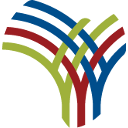China has announced a US$3.49 million (R60 million) partnership with South Africa to expand HIV prevention services among adolescents and young people, as well as people who inject drugs, over the next two years.
These two groups are among those considered key populations – people who are at high risk of HIV infection. Globally, young people between the ages of 15 to 24 account for more than a third of new infections, while people who inject drugs face disproportionately high risk due to limited access to harm-reduction services
Speaking at the launch event in Pretoria this week, health minister Dr Aaron Motsoaledi says the $3.5 million grant comes at the right time, “when the funding for HIV prevention interventions is shrinking.”
The project aims to reach 54 000 adolescents and young people in 16 Technical and Vocational Education and Training (TVET) colleges across seven provinces. It will also support 500 people in Gauteng who inject drugs through harm reduction and opioid agonist therapy programmes.
Keep up with the latest headlines on WhatsApp | LinkedIn
HIV risk among adolescents
South Africa has the world’s largest HIV burden with about 8 million people living with HIV. New infections remain stubbornly high, especially among adolescent girls and young women.
“In this country, every day, 122 adolescent girls and young women acquire HIV, 1000 every week. This is not just a biological gap. It is a justice gap. We are failing them,” says Winnie Byanyima, UNAIDS executive director. “To prevent new infections in this group, we need to tackle gender inequality, poverty, and the violence that strips young women of power over their bodies, choices, and futures.”
The minister underscored the critical role of adolescents as a measure for the success – or failure – of the country’s HIV response. “They are not just beneficiaries. They are the barometer of our society’s future health,” he says.
Subscribe To Our Newsletter
Be in the know with our free weekly newsletter. We deliver a round-up of our top stories and insightful reads from across the web.
- URLThis field is for validation purposes and should be left unchanged.
- Name*
- Email*
- CAPTCHA
People who inject drugs
People who inject drugs are at a high risk of several diseases, including HIV. But this population group is pushed to the margins of society by restrictive laws that criminalise drug use and discriminatory attitudes that discourage health-seeking behaviours.
“People who inject drugs deserve health services that are tailor-made yet fully integrated. We ought not to be judgmental,” Motsoaledi says.
A major barrier to the provision of targeted services for this group, according to the minister, is limited evidence or data regarding opioid replacement and substitution therapy and services in the country. To address this gap, the department will implement pilot projects in two provinces.
“This will generate pragmatic lessons, informing strategic guidance, within the required legal framework. This financial support from China will be catalytic for South Africa to fast-track pilot activities and inform us better.”
The HIV care needs among people who inject drugs are the subject of new research published in the Southern African Journal of HIV Medicine. The study found that only 40% of people in this population who start antiretroviral therapy (ART) are still in treatment after six months. This means that for every 10 people who started HIV treatment, only four stayed on it long enough to sustain health benefits.
What’s particularly concerning about these findings is that, when HIV treatment is interrupted, the virus can rebound, raising the risk of transmission and drug resistance.
The last mile
Motsoaledi believes that South Africa can eradicate HIV in much the same way that smallpox was eradicated. But this will require aggressive and targeted prevention strategies to reach communities that are falling through the cracks.
“This is our last mile for eradicating HIV as a public health threat. Therefore, there’s no room for waiting. No space to delay,” the minister says.
“Let us not pretend that these issues are easy. Substance and drug abuse, young people’s vulnerability, and high HIV prevalence among key populations are the uncomfortable battlegrounds of modern public health.” – Health-e News


